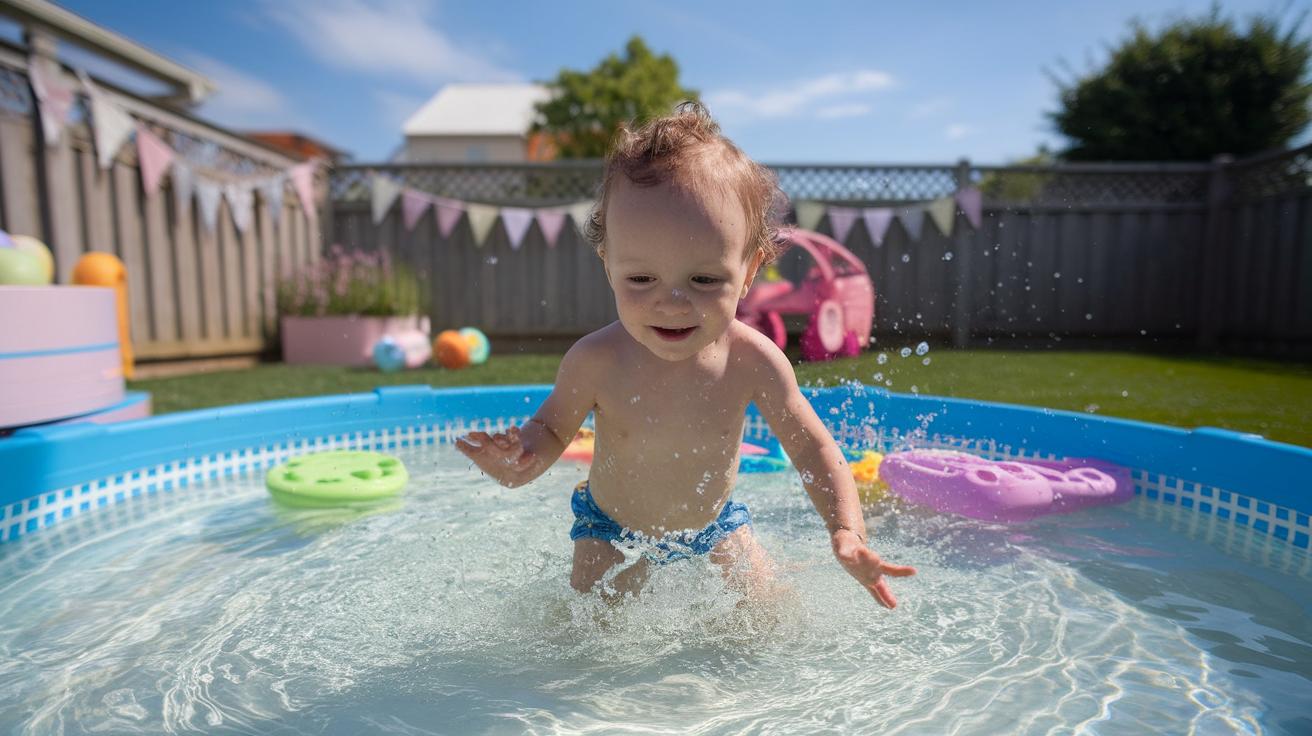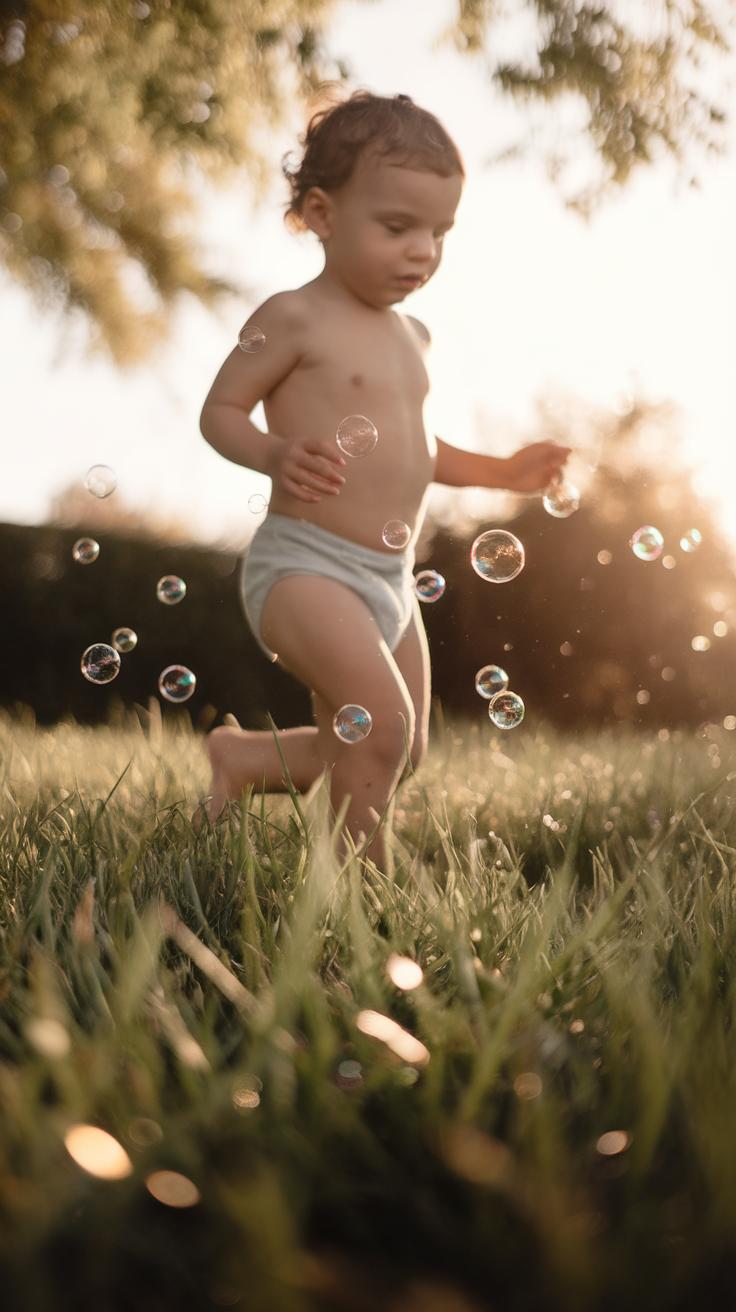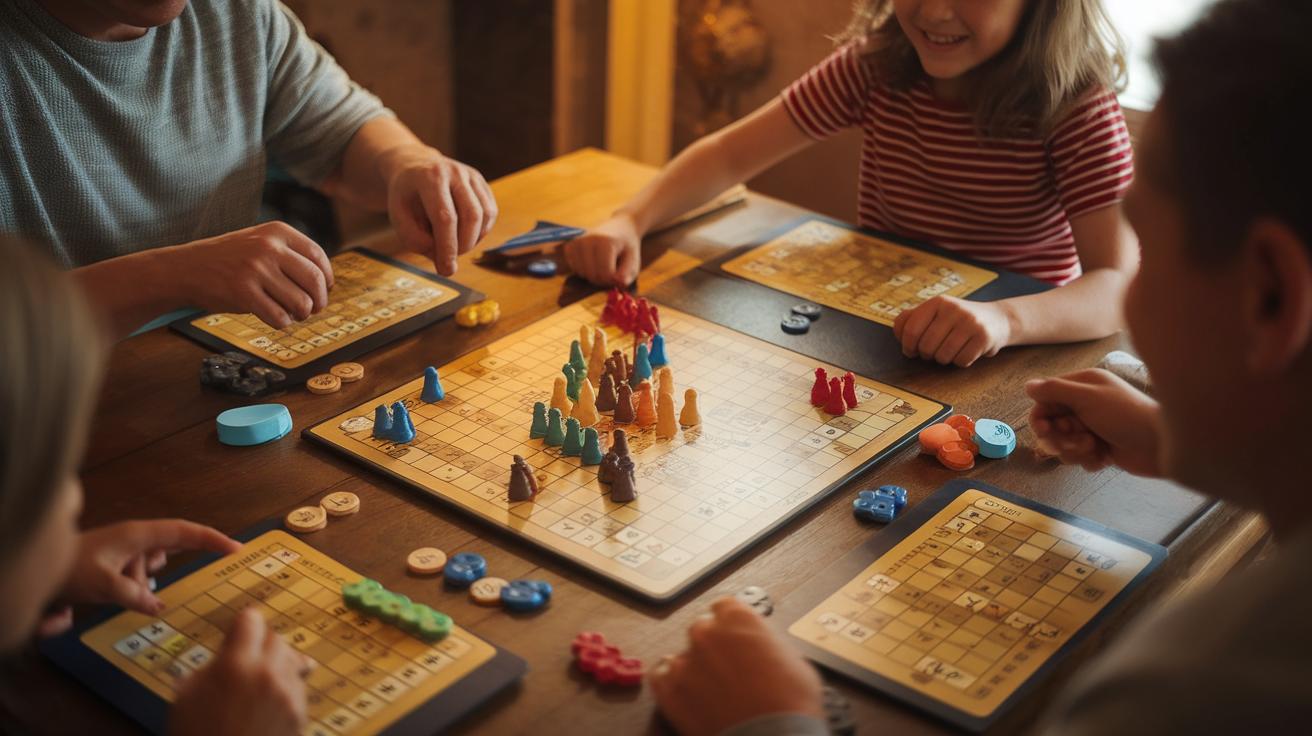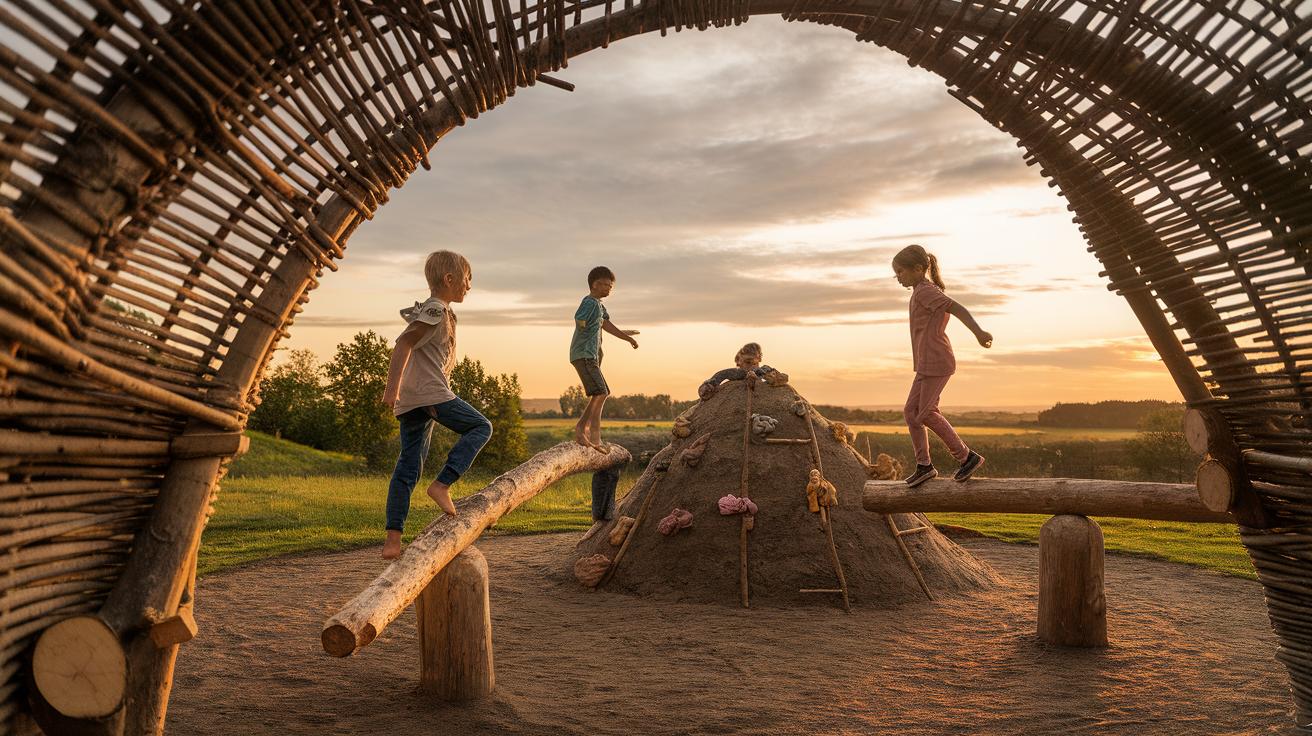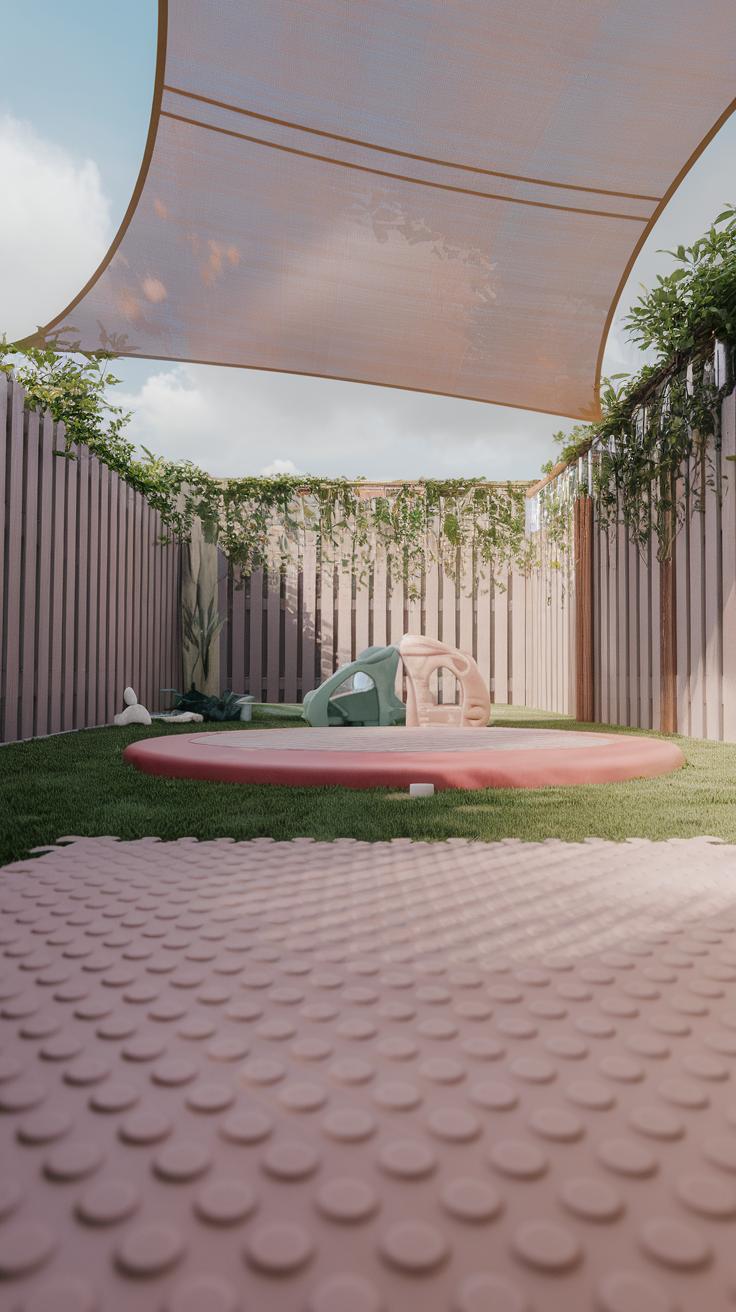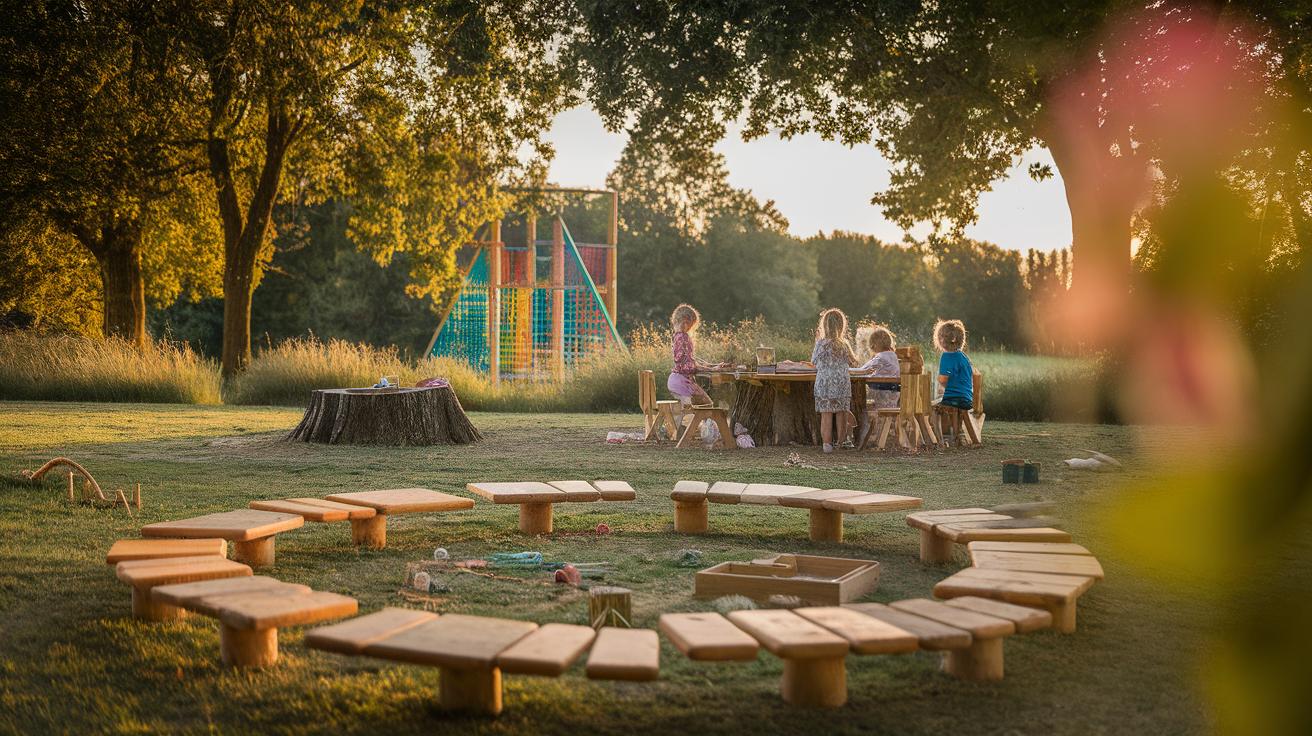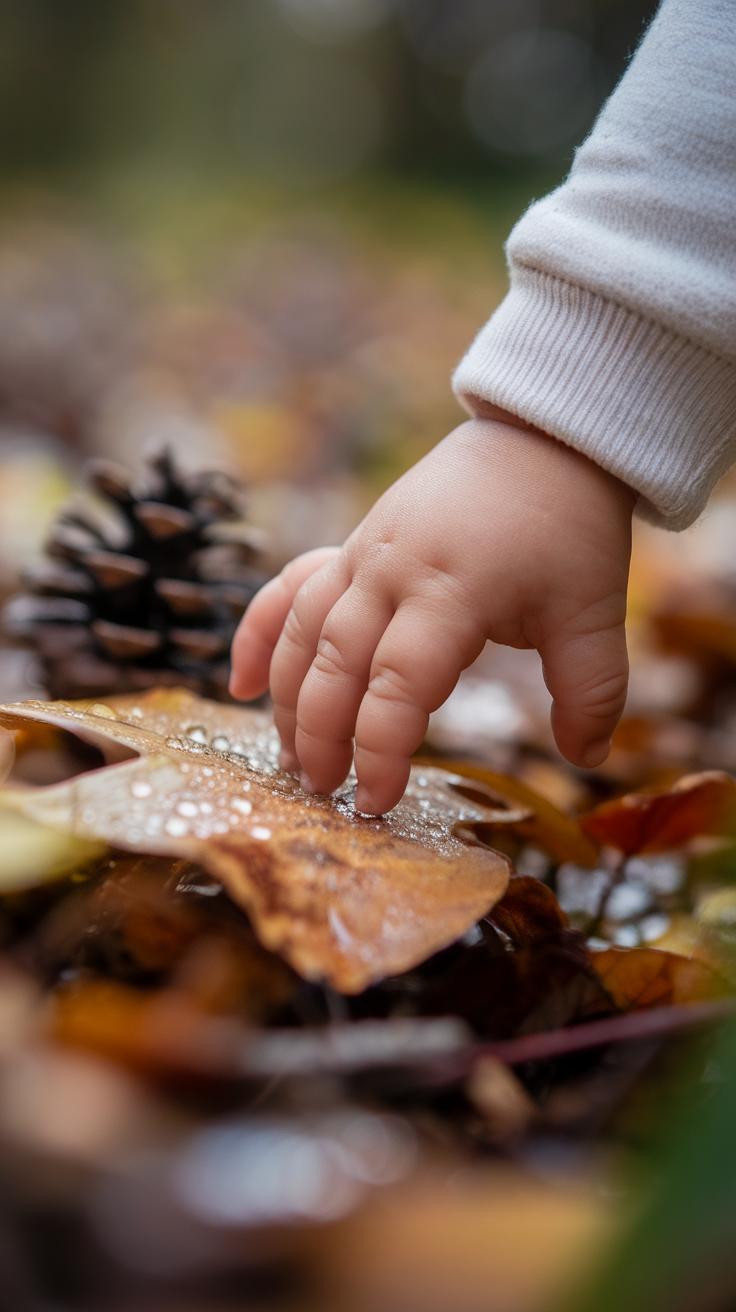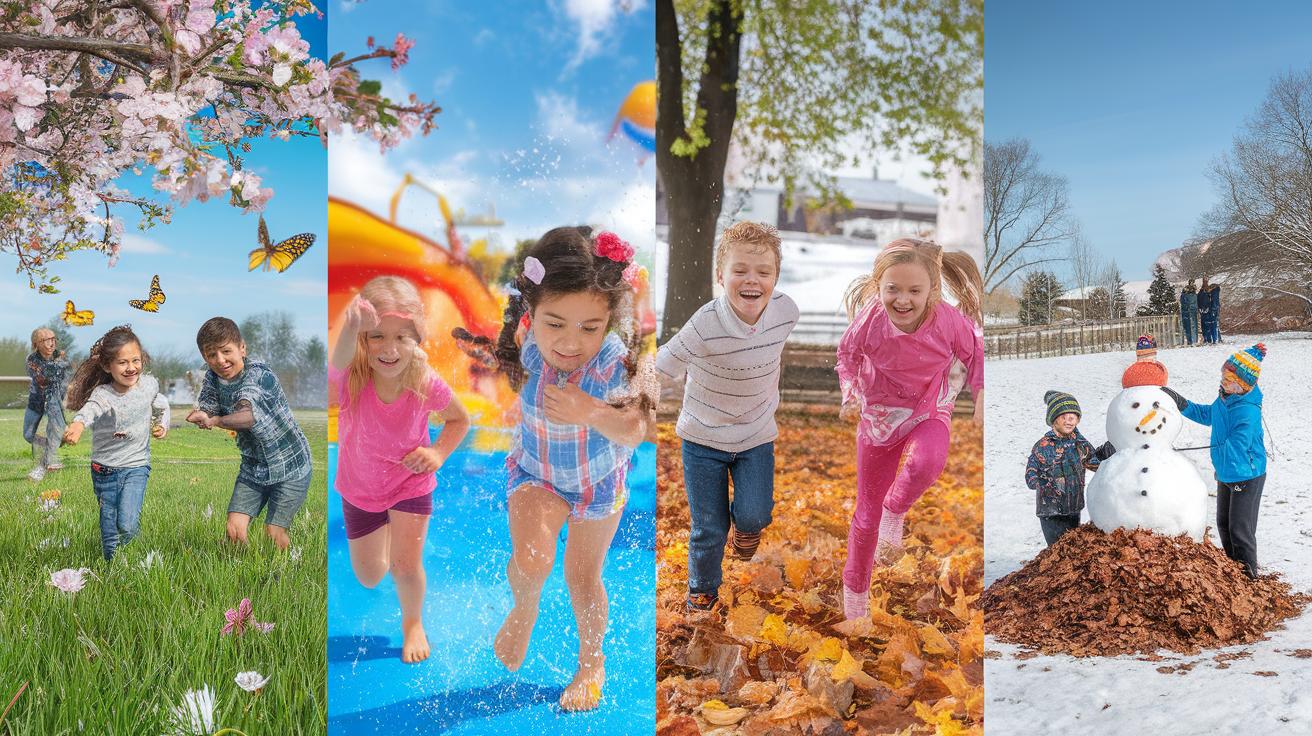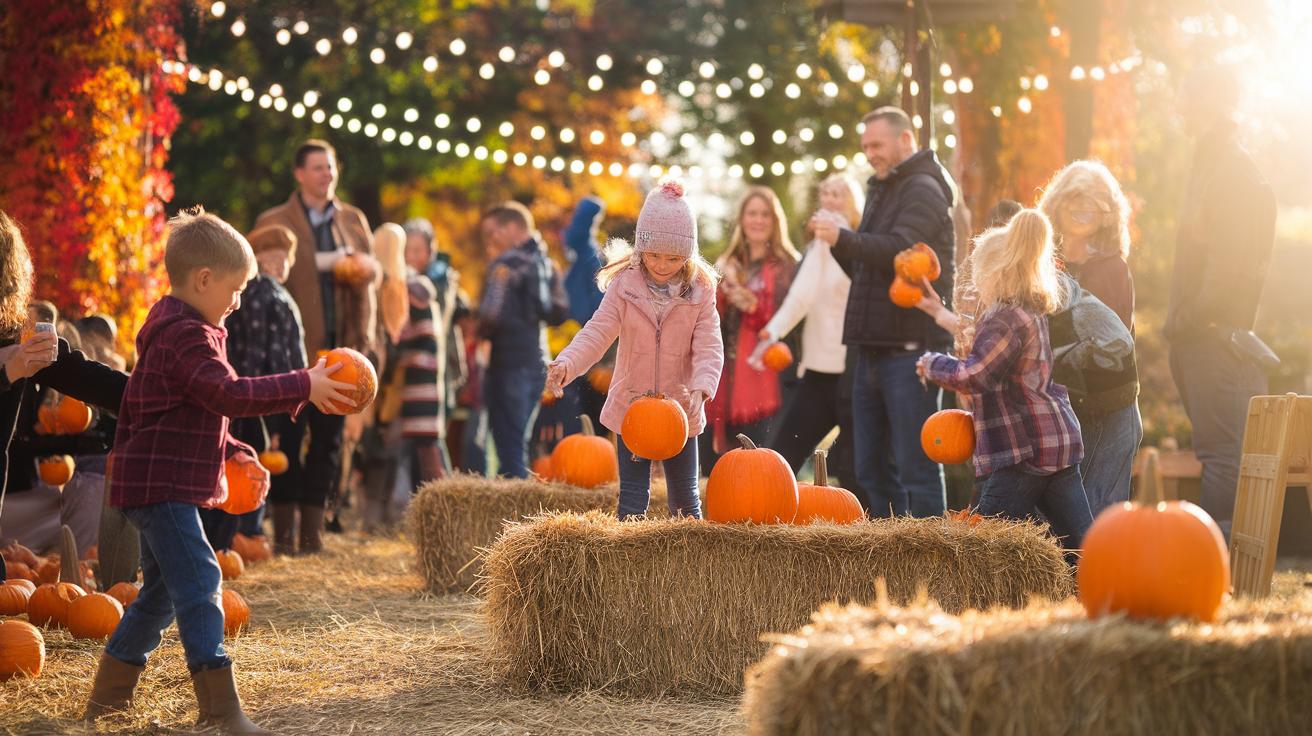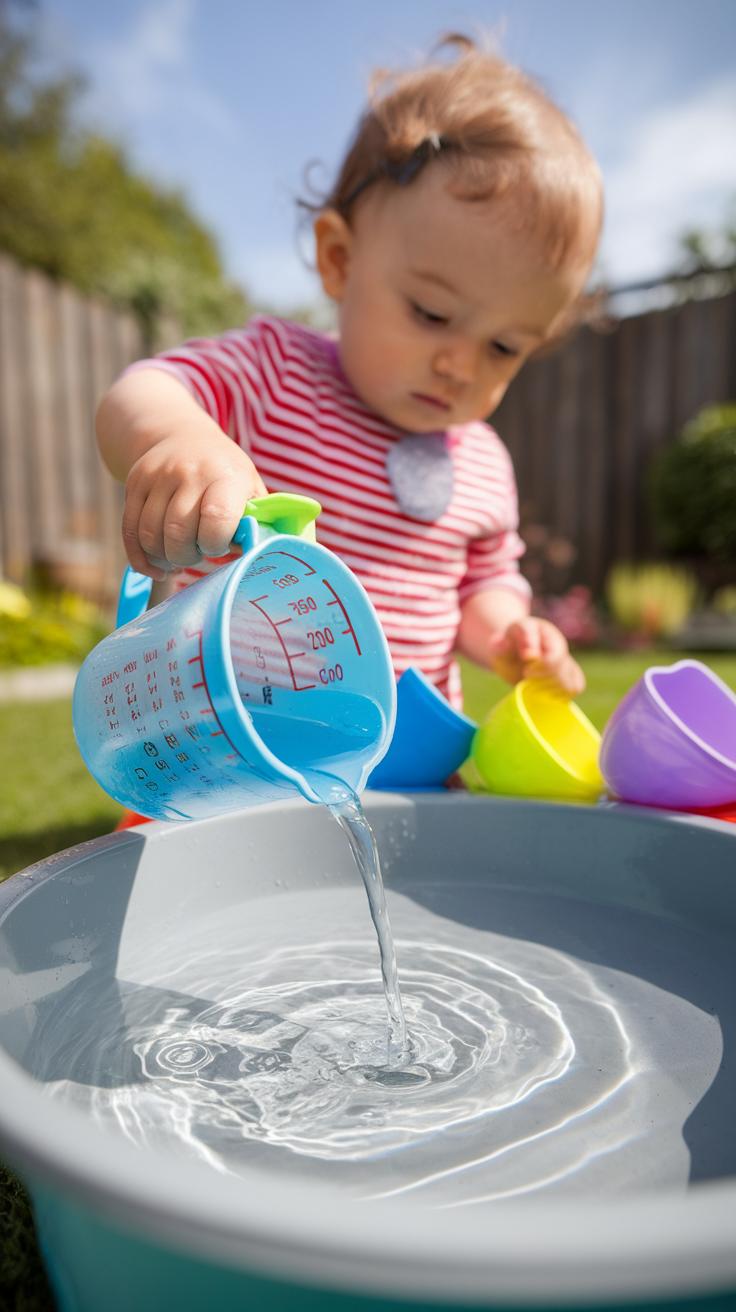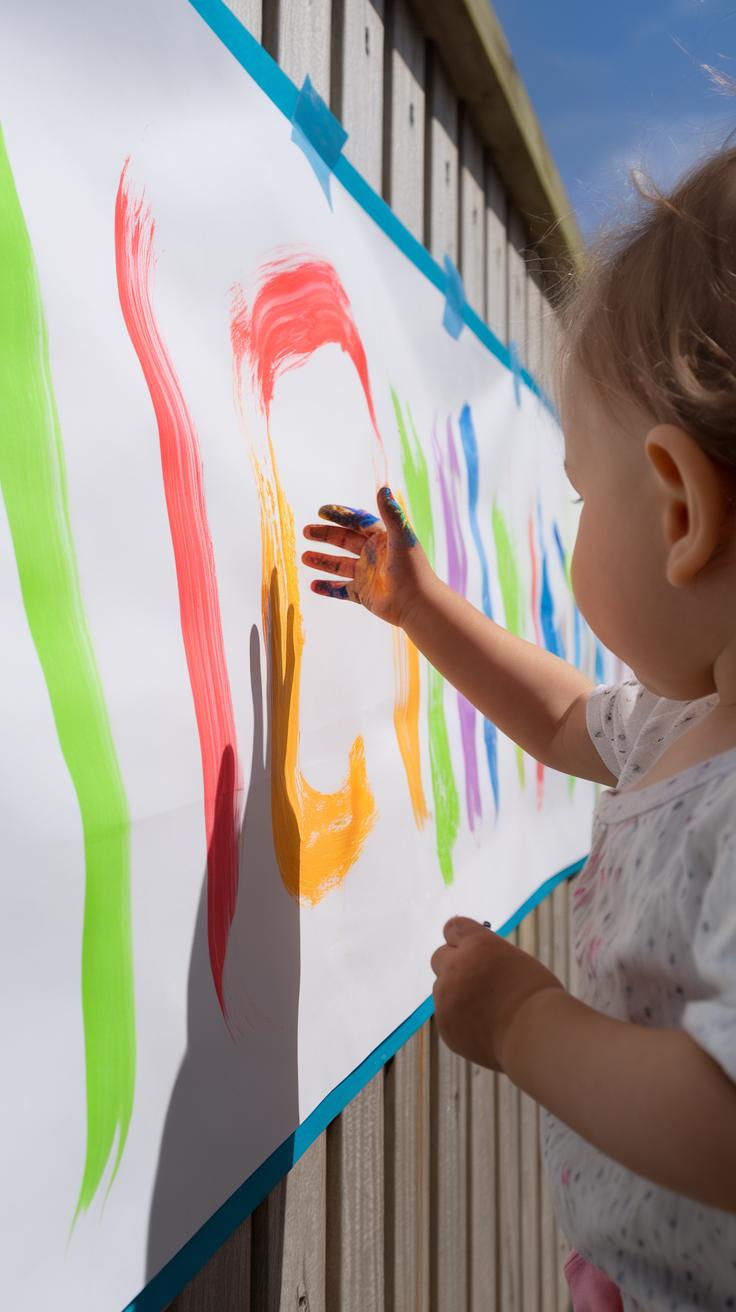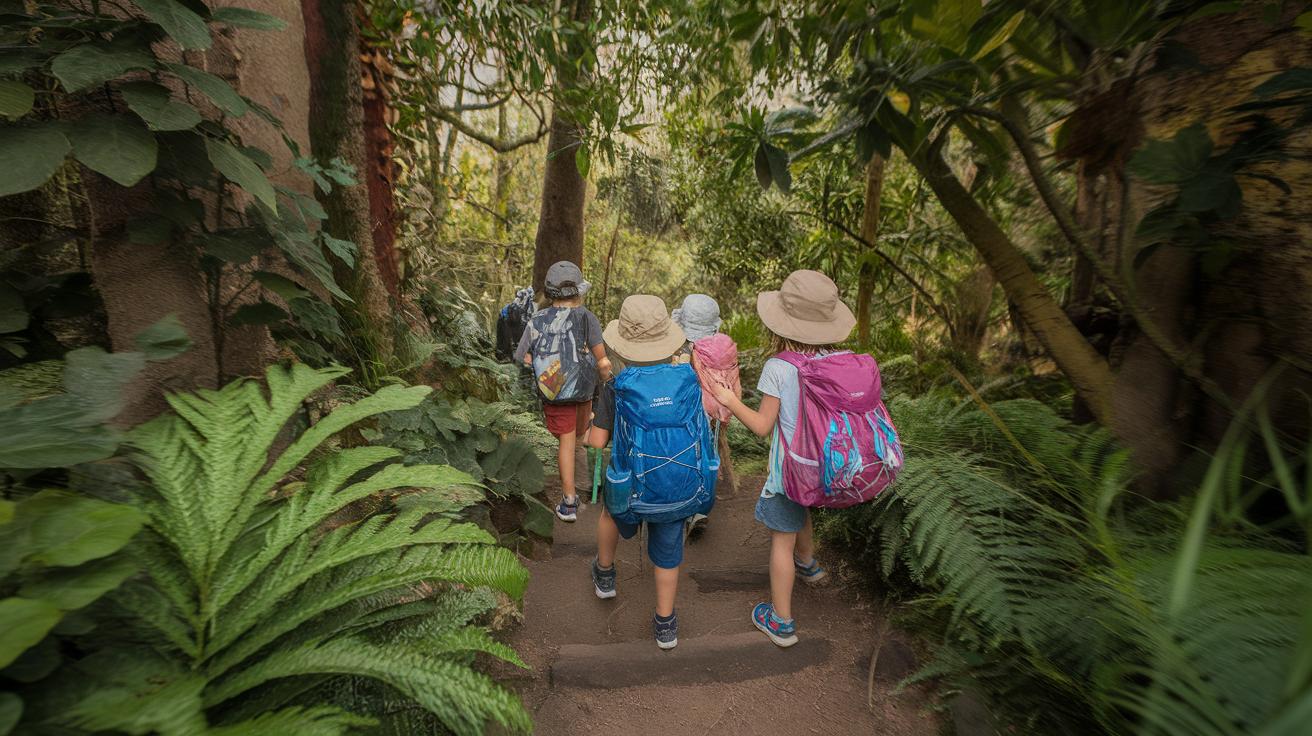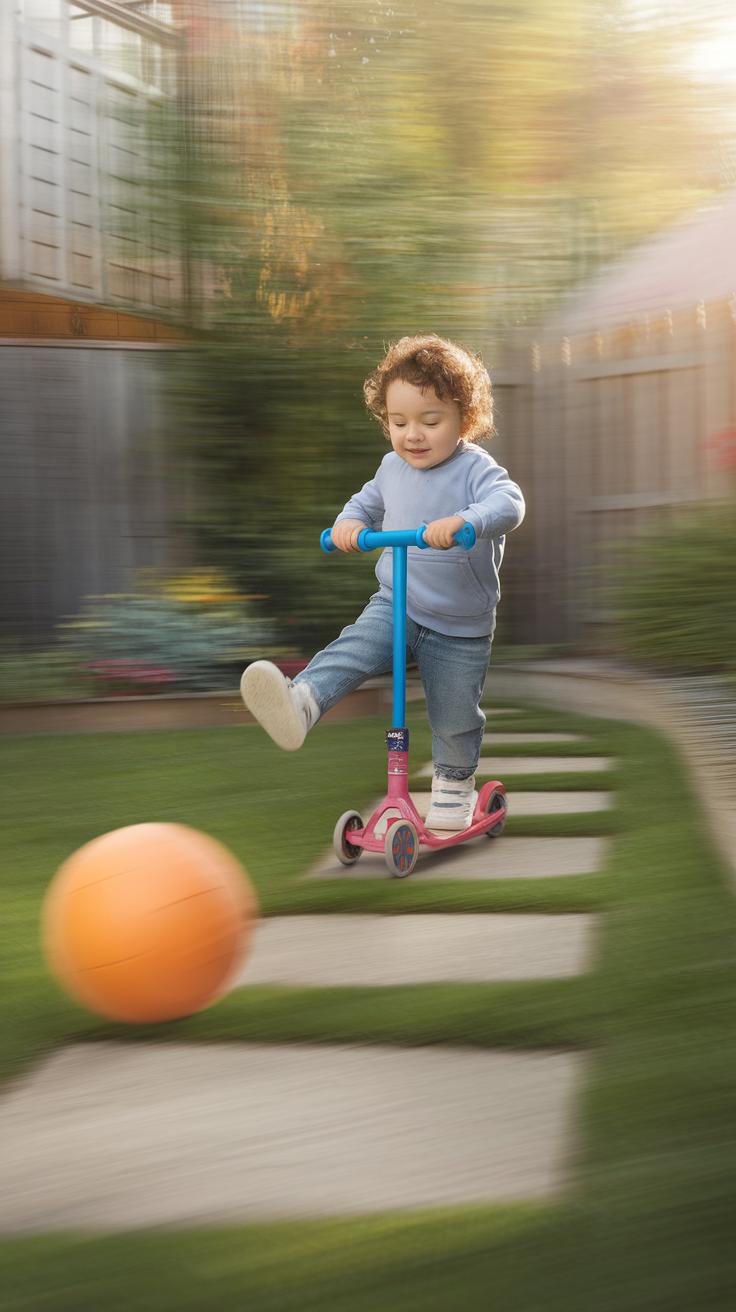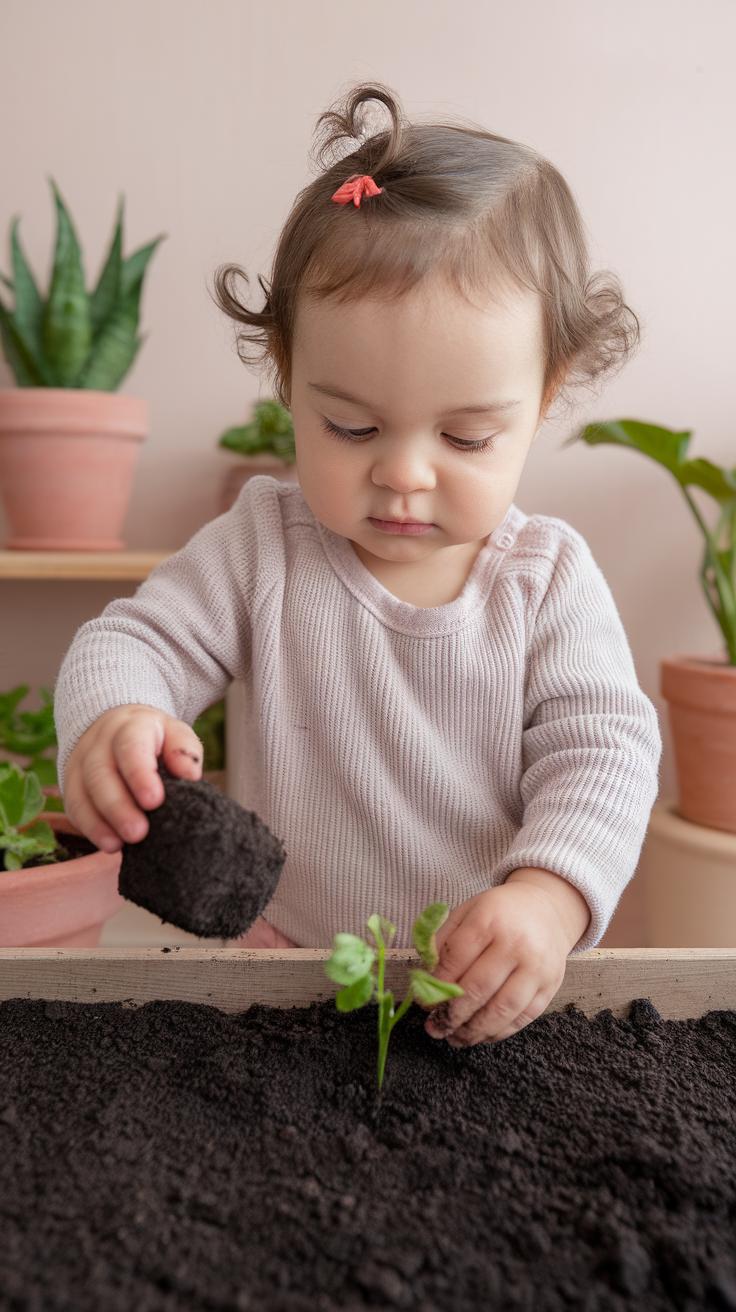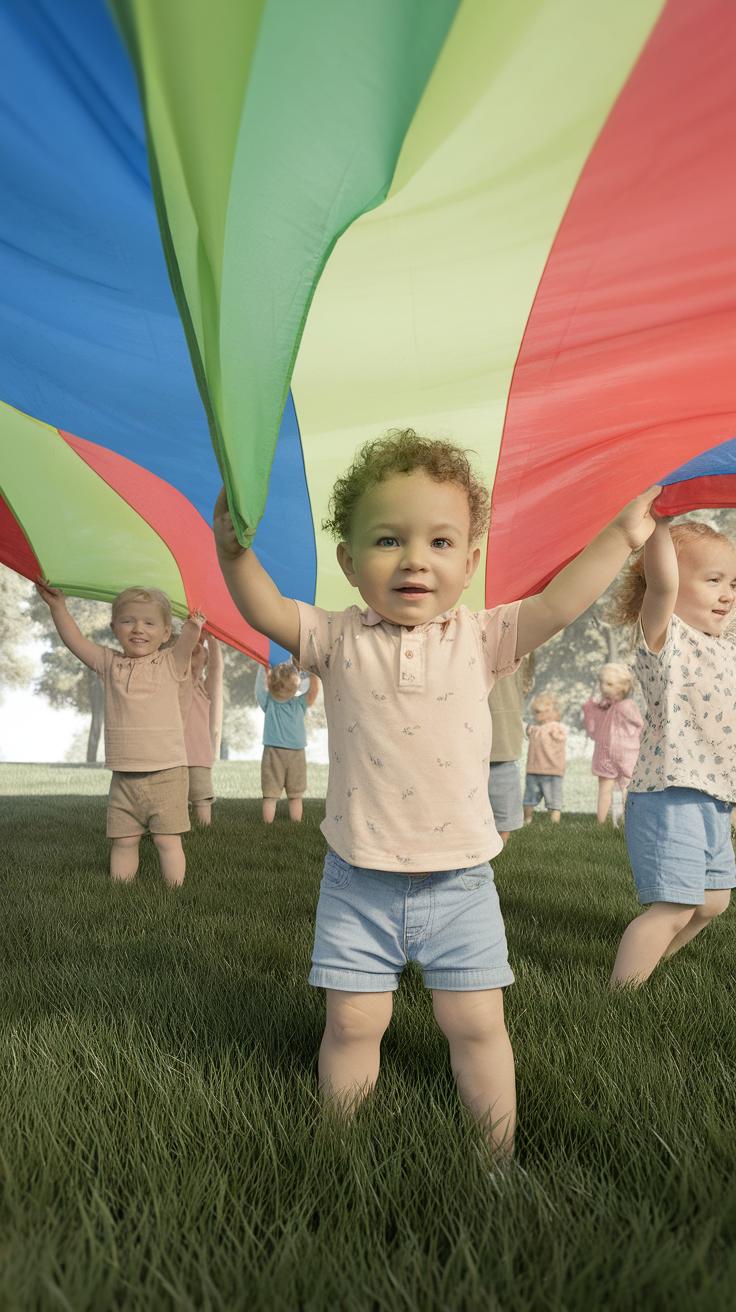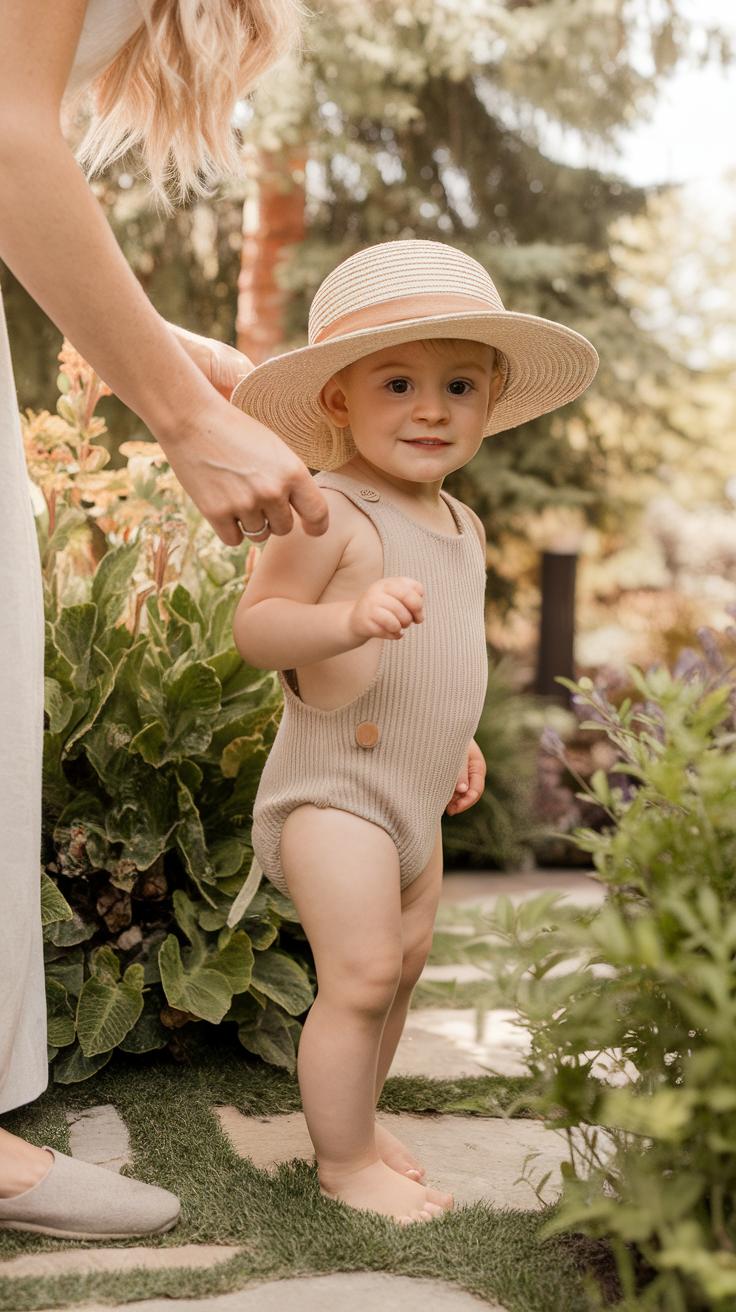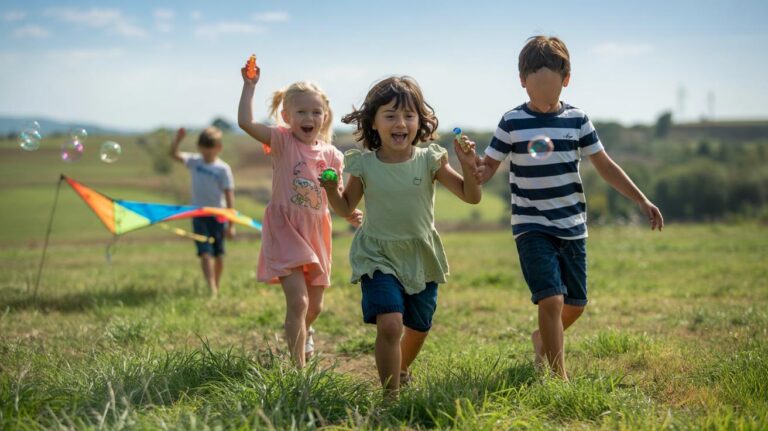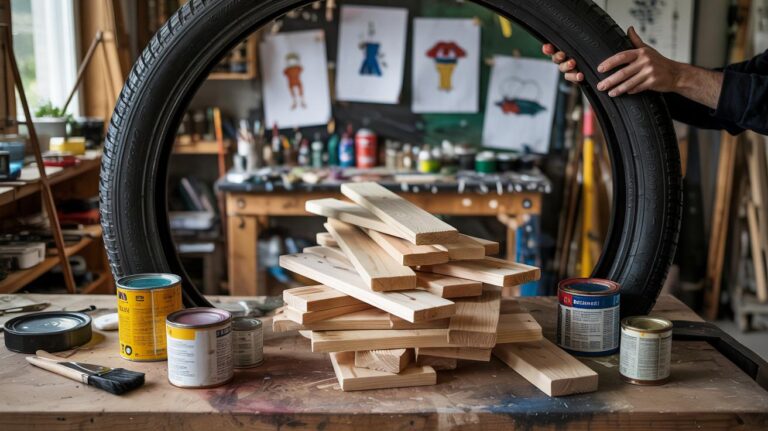Introduction
Outdoor play is essential for toddlers as it supports their physical growth, social skills, and cognitive development. Engaging in outdoor activities allows children to experience their environment in a direct and meaningful way. It encourages curiosity and fosters a natural sense of wonder about the world. You as a parent or caregiver play a key role in guiding your toddler through these experiences to ensure they are both enjoyable and safe.
Choosing the right activities and settings for your toddler means focusing on safety and simplicity. You can create opportunities for learning through play while allowing your child some freedom to explore on their own. This article will present practical outdoor activities suited for toddlers and offer guidance on how you can keep the experience safe, enriching, and stress-free for both you and your child.
Benefits of Outdoor Play for Toddlers
Outdoor play helps toddlers grow in many ways. Physical activity strengthens their muscles and bones. Fresh air and sunlight support their overall health and boost their immune system. When toddlers play outside, they learn to move their bodies by running, jumping, or climbing. These actions improve balance and coordination.
Playing outside also sparks creativity. Children invent games, use natural objects like sticks and leaves, and explore different textures. Social skills develop when toddlers play alongside others, sharing and communicating.
Outdoor settings offer many sensory experiences. Toddlers hear birds, feel grass, and see new colors. These senses connect with brain development and problem-solving skills. You may notice your child becoming more curious and confident as they reach new milestones, such as walking on uneven ground or learning to throw a ball.
What new discovery will your toddler make in the fresh air today?
Physical Development
Running across grass or climbing on small playground equipment builds your toddler’s muscle strength. Each jump or step helps improve their balance and coordination. These movements train important motor skills for future activities like riding a bike or playing sports.
Physical activity outdoors also supports bone health. Sunlight provides vitamin D, which helps bones grow strong. Moving in open spaces boosts heart and lung health, encouraging better cardiovascular endurance.
When toddlers practice these actions regularly, their bodies become more agile and resilient. Can your little one take a few extra steps or jump a little higher today?
Cognitive and Emotional Growth
Outdoor play offers challenges that teach your toddler to think and focus. Figuring out how to climb a small structure or balance on a log encourages problem-solving skills. Concentration improves as toddlers plan their movements and test what their bodies can do.
Nature also helps regulate emotions. Calm surroundings like parks can reduce stress and increase happiness in young children. When toddlers spend time outside, they often feel more relaxed and less frustrated.
Social interactions during outdoor play teach emotional control and cooperation. Experiencing success and minor setbacks helps toddlers understand their feelings better. How does your child react when they try something new outside?
Choosing Safe Outdoor Spaces for Toddlers
Finding the right outdoor spot for your toddler means putting safety first. Look for places with fences or barriers to keep your child within sight and prevent wandering. Soft ground materials such as mulch, sand, or rubber mats cushion falls and reduce injury risks. Clean surroundings free of litter, broken glass, or animal waste protect your toddler from germs and cuts.
Parks designed for young children often have age-appropriate equipment and clear sightlines, making supervision easier. Your backyard can offer a relaxing and controlled environment if it meets safety standards. Playgrounds that separate toddlers from older kids minimize rough play and accidental knocks.
How do you decide which space feels safest for your toddler? Consider how well you can watch your child and how quickly you can reach them if needed. Selecting a safe outdoor area ensures your toddler enjoys active play without unnecessary risks.
Assessing the Environment
Before settling your toddler in any outdoor spot, scan the area carefully. Remove sharp objects like broken branches, glass shards, or metal scraps that could hurt little hands or feet. Check for toxic plants known to cause irritation or poisoning, such as poison ivy or certain garden flowers. Uneven ground or holes might cause falls or sprained ankles.
Consider how close the area is to traffic or busy streets. Fences or natural barriers help prevent toddlers from wandering into danger. Watch for unfamiliar people or pets around and think about how you can limit their access. Security comes from knowing exactly who and what surrounds your child.
What hazards might your toddler miss while playing? Spotting these dangers early keeps playtime fun and injury-free.
Creating a Toddler-Friendly Zone
You can turn your backyard or corner of your yard into a safe space designed just for your toddler. Start by making sure there is shade from trees or umbrellas to protect from sun exposure during sunny days. Add comfortable seating for you to watch while your child plays nearby.
Choose play materials that encourage movement and creativity but stay safe—soft balls, stacking blocks, or water tables work well. Use non-toxic, washable paints or materials for craft activities outdoors. Keep toys organized in a container to reduce tripping hazards.
Has your outdoor space sparked your toddler’s curiosity and play? A well-planned, toddler-friendly zone invites exploration while giving you peace of mind over their safety. This effort helps your child build confidence as they play, learn, and grow outside.
Simple Nature Walks and Sensory Exploration
Taking your toddler on a nature walk invites curiosity in a safe and controlled way. Choose a quiet path with low traffic and clear boundaries. Let your toddler stop often to observe plants and insects closely. Ask questions like, “What colors do you see on that flower?” or “Can you find the tiny bugs moving on the leaves?” Encourage your child to listen for various natural sounds such as birds chirping or leaves rustling in the wind. These simple moments build awareness of the world beyond screens and toys.
Sensory play during walks helps toddlers process new information with their senses. Touching bark, smelling fresh grass, or hearing water flow stimulates brain development and focus. These activities support emotional growth by calming their anxiety and enhancing concentration. How often do you step outside just to notice the small, fascinating things your toddler discovers?
Engaging the Senses
Invite your toddler to feel the texture of different leaves—smooth, rough, or prickly. Let them pick flowers to smell, pointing out the differences between sweet, fresh, or earthy scents. Take moments to quietly listen for birdsong or the buzz of bees. These sensory experiences deepen connection to the environment by making nature tangible.
When a toddler tastes the soft petals or the crisp grass below, they are learning about cause and effect and self-expression. Simple sensory activities like these increase awareness and encourage questions. What sensations does your child enjoy the most? How can you create similar moments at home or on your next outing?
Safety During Walks
Keep a close eye on your toddler to prevent wandering near unsafe areas. Using a soft harness or wrist link can provide extra security without restricting freedom too much. Always guide your child to stay on marked paths to avoid tripping hazards and avoid entering thick bushes or tall grass where ticks or poison ivy might be present.
Teach your toddler to avoid touching unknown plants or insects. Carry a small first aid kit in case of minor scrapes or reactions. Stay aware of your surroundings and maintain eye contact often. How do you balance giving your toddler independence while ensuring their safety during outdoor adventures?
Outdoor Water Play Activities
Your toddler will likely enjoy playing with water outdoors. Water play offers simple games like pouring water between cups, splashing, or floating small toys. These activities can keep your child entertained while helping develop fine motor skills. For example, holding and squeezing a sponge teaches hand strength and coordination. Measuring cups encourage early math skills as toddlers compare amounts. Water also provides soothing sensory input, helping calm toddlers and supporting focus. You might notice your child loves watching bubbles float or feels the water’s temperature change, which sharpens sensory awareness. Simple games like filling and emptying containers offer hands-on learning without needing fancy tools. How can you make water play part of your toddler’s day without adding stress? Think about easy setups and toys you already have at home.
Setting Up Water Play
Setting up water play can be quick and simple. Use a small plastic tub or water table placed on a flat surface outside. Fill it with a few inches of clean water and add safe toys like plastic cups, spoons, or small balls. These items encourage toddlers to scoop, pour, and splash. Keep the water shallow to prevent any risk of drowning. Stay close by during play to supervise closely, as toddlers can slip or put water in their mouths. Changing water often keeps it fresh and clean. Avoid slippery surfaces or place a towel underneath to catch spills. When the weather is warm, water play offers a refreshing way to stay active but never leave your child unattended near water, no matter how shallow it is.
Benefits of Water Play
Water play helps improve hand-eye coordination by encouraging precise movements like pouring and scooping. When toddlers fill containers, they practice controlling their hands and fingers. Water also invites experimentation, as children test what floats or sinks, or how much water different containers hold. This encourages problem-solving and curiosity. The sensory experience of water—with its cool temperature and flowing movement—can calm toddlers and reduce frustration. Many parents find water play helps their child focus and relax after more active activities. Do you notice your toddler becomes more patient or engaged during water sessions? These moments can support emotional regulation and calmness while building important skills.
Creative Outdoor Art and Craft Ideas
Painting with natural brushes made from twigs, leaves, or flower petals offers toddlers a fun way to combine creativity with fresh air. Using different textures helps them explore how various materials create unique marks. Leaf rubbings are another great activity. Place a leaf under paper and let your child rub crayons or chalk on top to reveal the pattern. Sidewalk chalk lets toddlers draw large pictures while moving around freely outside.
These activities encourage imagination and sensory play at the same time. Managing mess is simple with washable paints and chalk. Cover the work area with plastic or old towels to protect surfaces and clothes. Choose non-toxic, safe materials to avoid skin irritation.
How might your child respond to painting with a feather instead of a brush? Such small variations keep outdoor art exciting and engaging.
Using Natural Materials
Sticks, leaves, and flowers can be more than decorations; they are tools for creative projects. Use sticks as paintbrush handles or to scratch patterns into soft clay. Leaves and flowers add color and texture to collages or stamps for prints. Handling these materials supports fine motor skills by encouraging toddlers to grasp, press, and manipulate objects.
These tactile experiences also build connection with nature. Feeling the roughness of a stick or the softness of a petal makes your toddler more aware of the outdoors. By inviting them to explore natural items, you add layers to imaginative play that screen time rarely offers.
What is your child’s favorite natural object to use for art? Let them lead the choice and see where their curiosity takes them.
Supervised Freedom
Outdoor art activities let toddlers express themselves freely, but they need careful watching. Make sure they do not put leaves, sticks, or paint in their mouths. Explain gently which items are safe to touch and which to avoid to build their understanding over time.
Help them respect the environment by using fallen leaves or sticks rather than picking from living plants. Show that art can celebrate nature without harming it. Set clear boundaries on which areas they can gather materials from and where it is best to leave things as they are.
Can you balance giving your toddler space to create with keeping them safe? Small reminders and your presence make all the difference.
Active Play with Balls and Rideon Toys
Outdoor ball games offer simple ways to help your toddler practice coordination and build confidence. You can start with rolling a soft ball back and forth. This encourages your child to track and time their movements. Throwing a lightweight ball into a basket or at a target improves hand-eye coordination. When your toddler kicks a ball gently, they learn how to control their legs and balance. These actions involve important muscles and focus skills.
Ride-on toys like tricycles and scooters can also provide fun, active play. Choose models made for toddlers with sturdy wheels and low centers of gravity to reduce tipping risks. Introduce ride-on toys gradually. Show your child how to sit and push with their feet while holding handles firmly. Supervise closely whenever they use these toys outdoors. These activities support motor skills and help toddlers gain confidence moving on their own.
Ball Games for Toddlers
Simple ball games fit toddler abilities and keep them hooked on play. Try “catch and throw” with a soft ball sized for small hands. It improves timing and grip. “Rolling race” asks your child to roll a ball to a finish point, encouraging gentle pushes and aiming. You can also set up a target made of cones or boxes for your toddler to throw or kick balls at. Games like “kick and chase” add running and fun to the mix. How can you adjust these games to match your toddler’s skill level today?
Choosing and Using Ride-on Toys
When picking ride-on toys, look for models labeled safe for your child’s age and weight. Low seats, wide bases, and easy steering keep toddlers stable. Avoid toys with sharp edges or small detachable parts. Introduce the ride-on in a safe, flat outdoor space free from traffic or obstacles. Stay close by as your toddler learns to balance and move. Encourage frequent breaks and help when needed. How will you create a safe zone for your toddler’s first rides?
Exploring Planting and Gardening with Toddlers
Gardening offers toddlers a hands-on way to connect with nature. By planting seeds, your child feels the texture of soil and watches plants grow. Watering plants teaches them about care and patience. Digging in the dirt helps develop fine motor skills and provides a sensory experience through touch and smell.
These activities carry educational benefits. Your toddler learns cause and effect as they see how seeds turn into plants. Gardening builds responsibility, as kids understand the need to water and tend plants regularly. You can ask, “What do you think the plant needs to grow?” to spark curiosity during gardening time.
Engaging your toddler in gardening fosters a bond with the environment and builds confidence through small achievements like sprouting seedlings.
Getting Started with Gardening
Simple projects work best for toddlers new to gardening. Growing sunflowers is rewarding since they sprout quickly and grow tall. Herbs like basil or mint are good choices too. They can be planted in small pots or garden beds and require minimal care.
Choose large seeds that are easy to handle. Your child can push seeds into the soil and then water them gently. Use clear containers for herb seedlings so your toddler can see roots growing. This visual growth helps maintain interest and teaches the plant’s lifecycle.
Start with short gardening sessions to keep your toddler engaged and avoid frustration. What small garden space do you have that could become a starter spot for these plants?
Safety and Supervision
Safe tools are vital when gardening with toddlers. Use plastic or child-sized shovels and watering cans with no sharp edges. Avoid heavy or metal tools that could cause injury. Make sure soil is free from harmful chemicals or pesticides before your child handles it.
Always supervise your toddler during gardening activities. Watch for small objects like seeds that could be a choking hazard. Teach your child to wash hands after gardening to prevent dirt ingestion. Wearing gloves can protect sensitive skin but make sure gloves fit properly.
Set clear boundaries about where toddlers can dig or walk to avoid unsafe areas. How can you prepare your garden area to keep your toddler safe while nurturing their interest?
Group Outdoor Activities and Social Play
You may have noticed how toddlers naturally start to show interest in playing alongside other children. Group play outdoors offers unique chances to build social skills like sharing, turn-taking, and cooperation. When toddlers play together, they learn to express emotions and solve simple conflicts with your guidance.
Organizing safe outdoor playdates or toddler groups involves choosing child-friendly spaces where everyone can be seen easily. Look for areas free of hazards and with soft ground. Keep group sizes small to ensure you can watch every child well. Setting clear, simple rules before play starts helps toddlers understand boundaries and feel secure.
What group activities can you try to encourage social growth? How can you balance active play with calm moments when energy runs high? Thoughtful planning will make group outdoor play both safe and fun for your toddler and their friends.
Simple Group Games
Try games that focus on interaction with easy rules. “Follow the Leader” encourages kids to copy actions, building attention and cooperation.
“Duck, Duck, Goose” introduces gentle chasing and turn-taking, helping toddlers respect others’ space.
“Parachute Play” with a colorful fabric promotes teamwork as children lift and lower it together. Singing songs during games adds a bonding element.
Games like these don’t need complex setups. They keep toddlers engaged while teaching cooperation and sharing in a natural way.
Managing Group Safety
Watching several toddlers at once takes careful attention. Position yourself where you can see all children without obstruction. Have a helper if possible to monitor a smaller group each.
Look for signs a toddler feels overwhelmed, such as sudden tears, withdrawal, or irritability. Take breaks with quiet activities like storytime or snacks to calm the group.
Guide children gently to resolve conflicts and praise positive behavior. Your calm presence reassures toddlers and helps them learn peaceful interaction.
What will you do if a child needs extra comfort or space? Planning responses ahead makes outdoor group play smooth and safe for everyone involved.
Preparing Yourself and Your Toddler for Outdoor Play
Before heading outside with your toddler, you need to think through some key steps. Packing the right items can keep the experience smooth and enjoyable. Include water and healthy snacks to keep energy levels steady. Sunscreen protects delicate skin even on cloudy days, and a small first aid kit helps you respond to minor scrapes quickly.
Clothing should match the weather and allow easy movement. Light layers work well, so you can add or remove pieces as conditions change. Closed-toe shoes protect little feet and support active walking or running. Bringing a hat and sunglasses offers extra sun protection.
Setting limits on playtime helps maintain routine, which toddlers rely on. Decide on a start and end time for outdoor activities. At the same time, be flexible. If your child shows signs of needing a break or wants to try something different, adapt your plans. How do you recognize when your toddler is tired or overwhelmed? Watch for fussiness, slowed movements, or avoidance of play. Staying tuned to these signals avoids meltdowns and keeps outdoor time positive.
Essential Preparations
Packing a small bag for outdoor play is your first step toward success. Water is a must to keep your toddler hydrated, especially on warm days. Include snacks that are easy to eat, like sliced fruit or crackers, instead of sugary treats that can cause energy crashes.
Sunscreen should be one of your go-to items. Look for options made for sensitive skin and apply it before heading out. A lightweight hat adds protection and helps keep your toddler comfortable. Carry a basic first aid kit with bandages, antiseptic wipes, and any medications your child might need.
Think about what your toddler needs for comfort—a favorite toy, a change of clothes, or a small blanket. These items can help them feel secure in a new or busy outdoor space.
Adapting to Your Toddler’s Needs
Outdoor play can be exciting but also tiring for toddlers. Pay attention to their moods and body language. If your child becomes irritable, pulls at clothing, or stops engaging with activities, it might be time to slow down or take a break.
Rest breaks can mean sitting in the shade, offering water, or simply holding your toddler until they feel ready to move again. Sometimes toddlers need shorter play sessions or quieter activities to avoid overstimulation.
If you notice your toddler seems restless before playtime, consider starting with a calm activity or reducing the session length. Being flexible helps you meet your child’s needs while still encouraging healthy outdoor exploration.
Conclusions
Keeping toddlers active outdoors combines physical activity with developmental benefits. Nature walks, simple games, and supervised play zones offer enjoyable ways for toddlers to engage their senses and improve motor skills. Encouraging exploration under your watchful eye builds confidence and a love for outdoor environments. You provide a balance of freedom and security that helps them thrive.
Your involvement is crucial in selecting age-appropriate activities and monitoring safety. Planning ahead and adapting to your toddler’s interests and abilities create rewarding moments for learning and fun. Outdoor play acts as foundation for healthy habits and shapes a positive attitude towards an active lifestyle. These experiences prepare young children for future challenges and joys of discovery.

